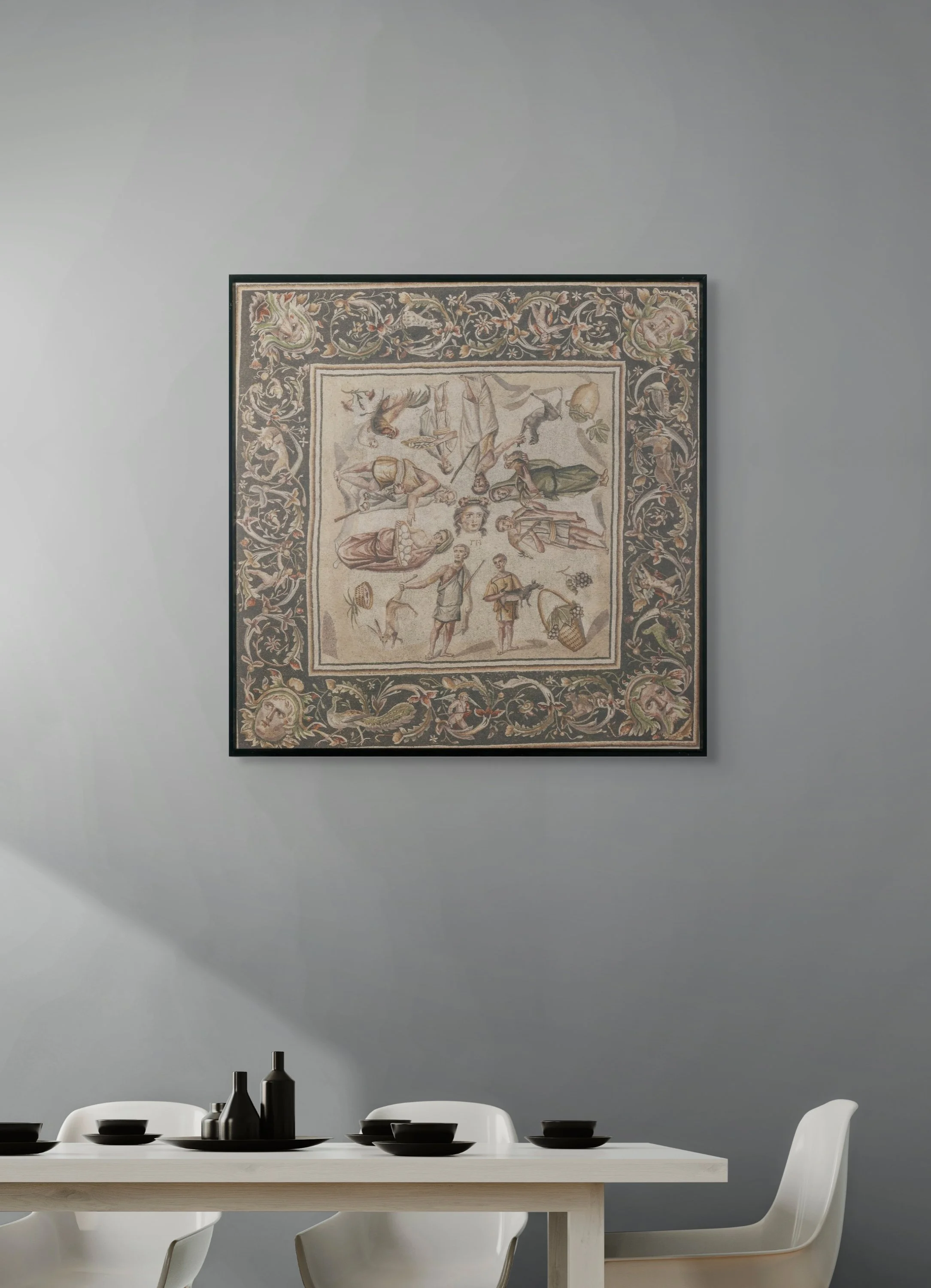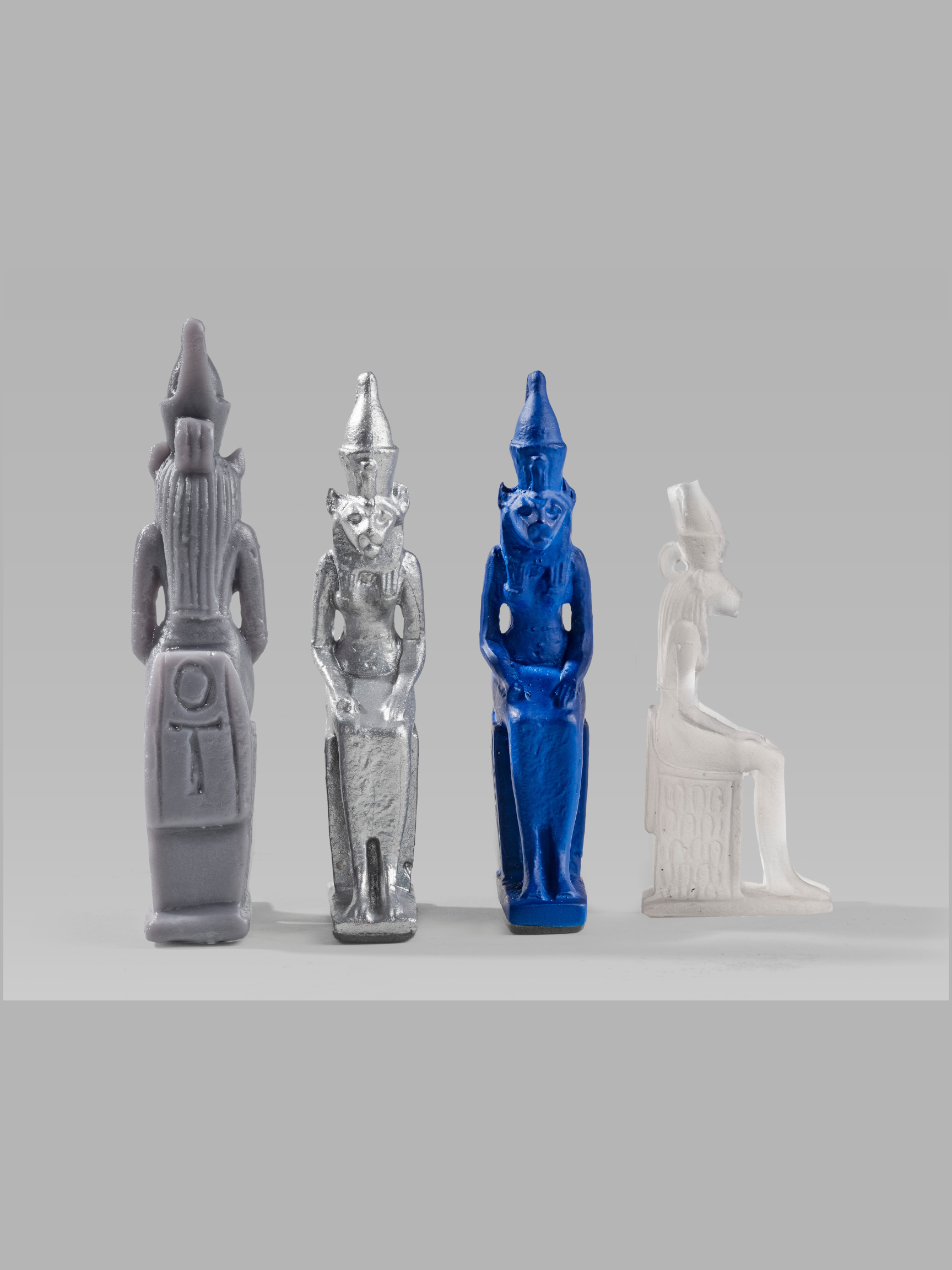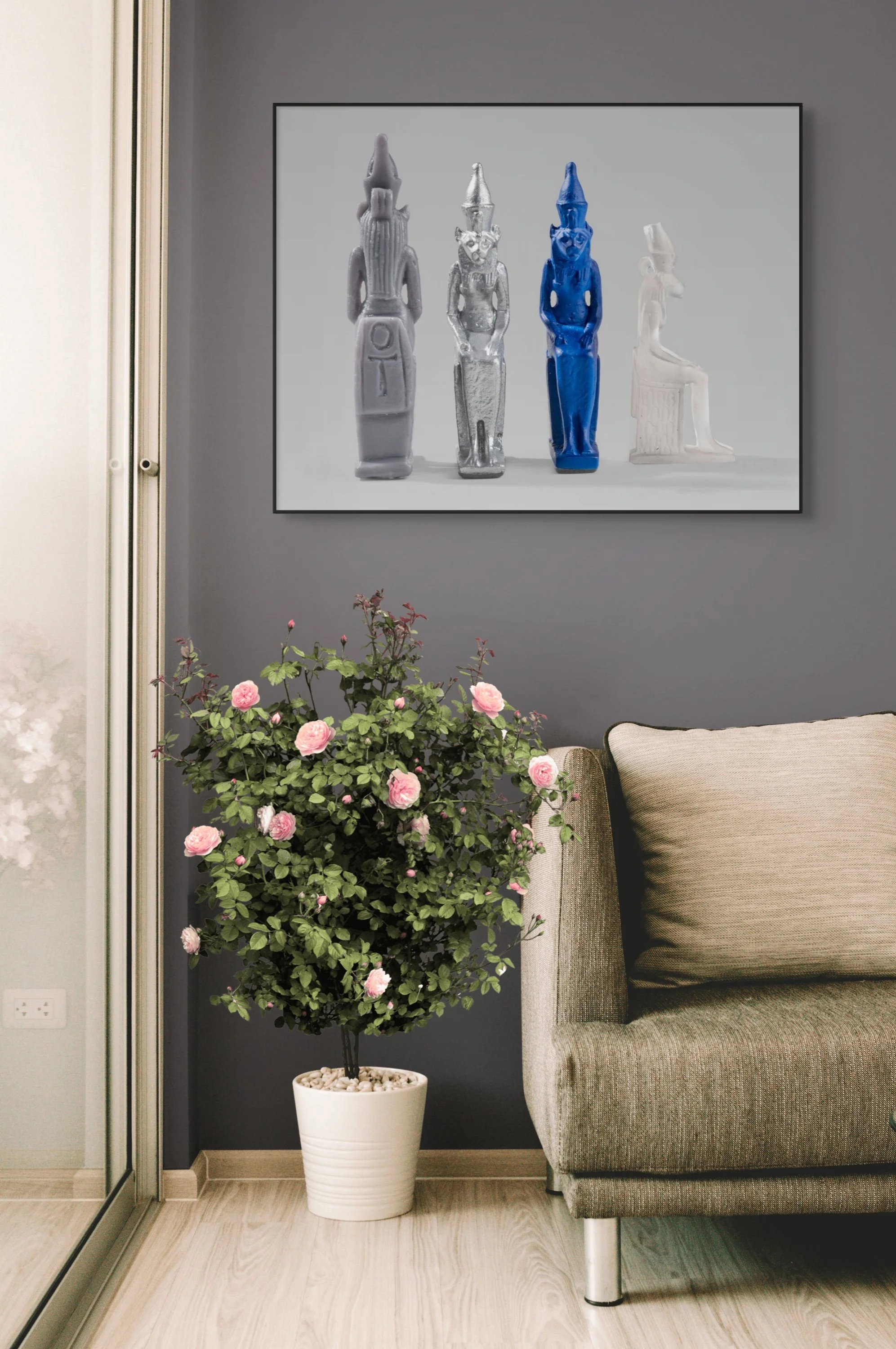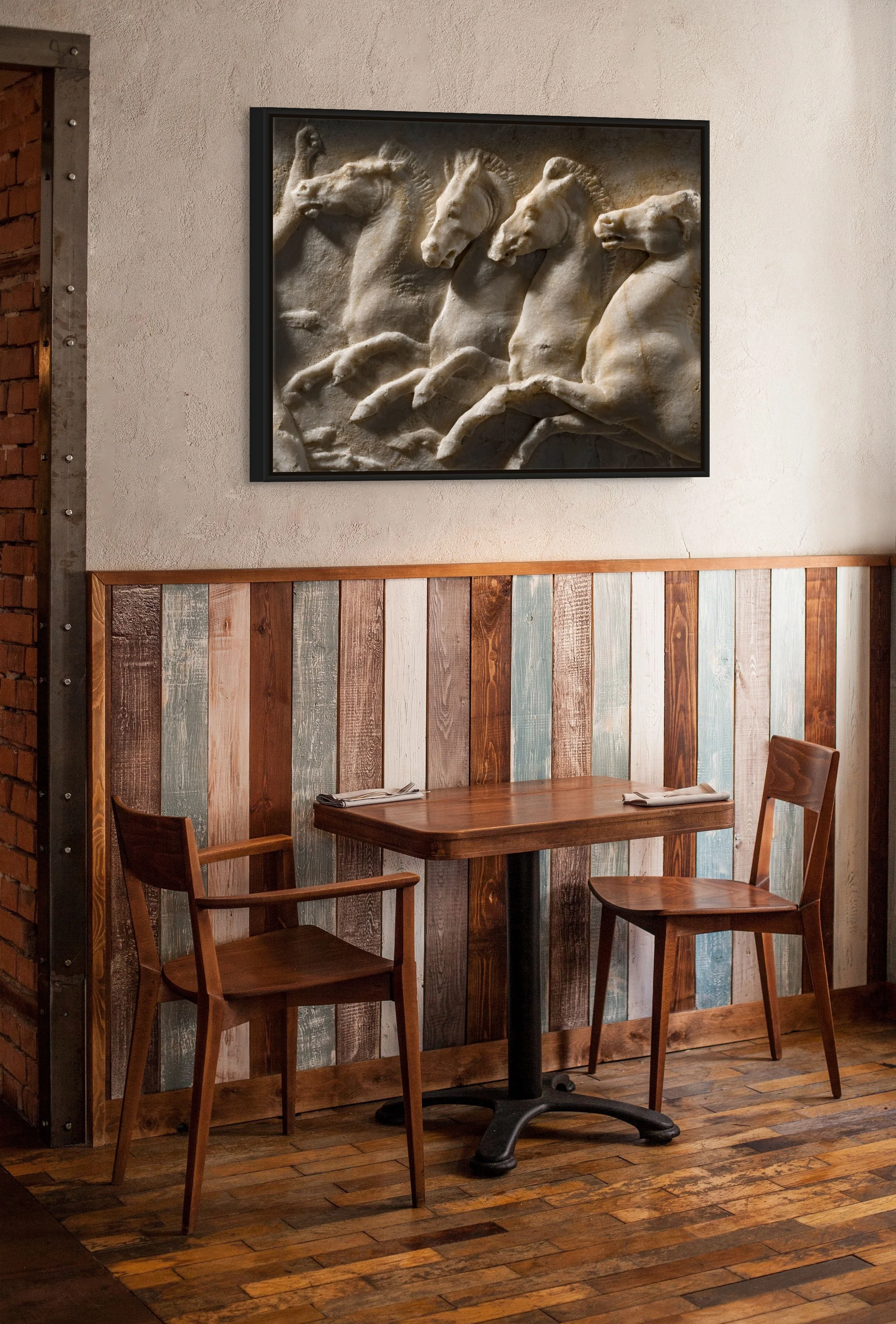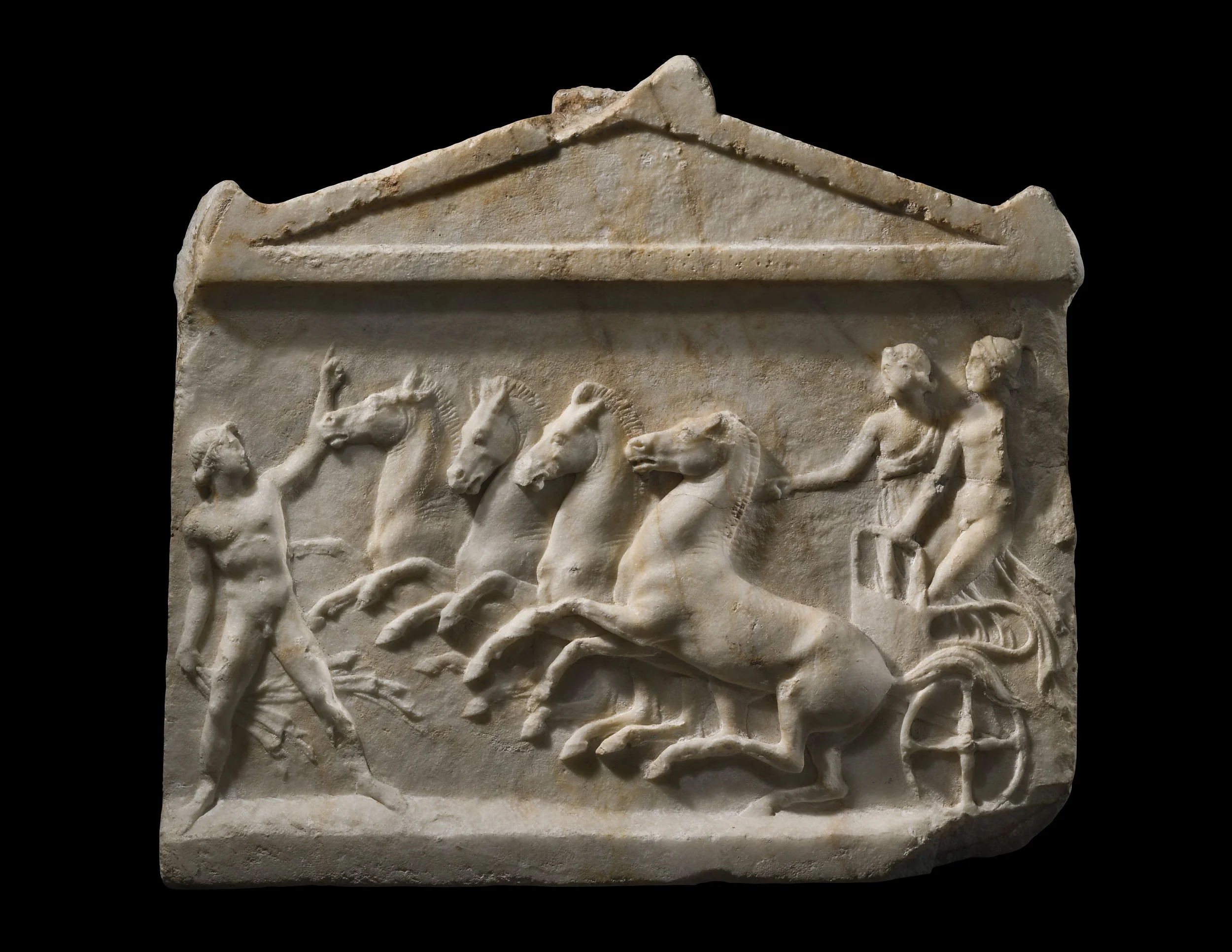 Image 1 of 14
Image 1 of 14

 Image 2 of 14
Image 2 of 14

 Image 3 of 14
Image 3 of 14

 Image 4 of 14
Image 4 of 14

 Image 5 of 14
Image 5 of 14

 Image 6 of 14
Image 6 of 14

 Image 7 of 14
Image 7 of 14

 Image 8 of 14
Image 8 of 14

 Image 9 of 14
Image 9 of 14

 Image 10 of 14
Image 10 of 14

 Image 11 of 14
Image 11 of 14

 Image 12 of 14
Image 12 of 14

 Image 13 of 14
Image 13 of 14

 Image 14 of 14
Image 14 of 14















Myths of Land and Sea Framed Print
Contempo
2025
Crystal porcelain print
Black aluminum alloy frame
50 cm x 40 cm (20 in x 16 in)
Ancient Original
Roman, 2nd-3rd century A.D.
Polychrome Tesserae
298 cm x 326 cm (117 in x 128 in)
This crystal porcelain print depicts a 10-foot ancient mosaic, allowing for fine detail and vivid mythological scenes from both the terrestrial and marine worlds. This crystal porcelain print distills its rich and expansive history into a beautifully elegant piece for the home.
On one side, two Erotes ride dolphins in opposite directions, surrounding a young, bare-chested man holding a ship's rudder. He is probably a Triton, a marine figure with the upper body of a man and the tail of a fish. Tritons were part of Poseidon's procession and often carried either a rudder or a conch shell used as a horn. The presence of the Erotes also points to Venus-Aphrodite, a major Roman goddess they often followed.
On the other side, a bearded man stands in front of what may be wheat or reeds. His look suggests he represents a river god, similar to the Nile or Orontes. Nearby, two young women, nude but wrapped in large floating mantles, likely represent Flora and Ceres. Flora holds a flower garland while Ceres carries a bundle of wheat.
The central scene is well preserved and made from hand-cut tesserae in a wide range of colors, including red, pink, blue-gray, ocher yellow, and green. The design is built on a light background with black outlines that give structure and contrast to the image.
On three sides, the mosaic is bordered by a continuous band of pelta and heart shapes. The pelta, a curved shield, was associated with Amazons in ancient mythology.
A colorful garland design runs through the black background of the central panel, using quarter-circles in the corners, half-circles on the sides, and six circles in the middle that contain the main scenes. The outer spaces are filled with neat, balanced floral patterns.
This ancient mosaic most likely decorated the floor of a high-end Roman villa. The crystal porcelain print distills its rich and expansive history into a beautifully elegant piece to decorate any wall.
Contempo
2025
Crystal porcelain print
Black aluminum alloy frame
50 cm x 40 cm (20 in x 16 in)
Ancient Original
Roman, 2nd-3rd century A.D.
Polychrome Tesserae
298 cm x 326 cm (117 in x 128 in)
This crystal porcelain print depicts a 10-foot ancient mosaic, allowing for fine detail and vivid mythological scenes from both the terrestrial and marine worlds. This crystal porcelain print distills its rich and expansive history into a beautifully elegant piece for the home.
On one side, two Erotes ride dolphins in opposite directions, surrounding a young, bare-chested man holding a ship's rudder. He is probably a Triton, a marine figure with the upper body of a man and the tail of a fish. Tritons were part of Poseidon's procession and often carried either a rudder or a conch shell used as a horn. The presence of the Erotes also points to Venus-Aphrodite, a major Roman goddess they often followed.
On the other side, a bearded man stands in front of what may be wheat or reeds. His look suggests he represents a river god, similar to the Nile or Orontes. Nearby, two young women, nude but wrapped in large floating mantles, likely represent Flora and Ceres. Flora holds a flower garland while Ceres carries a bundle of wheat.
The central scene is well preserved and made from hand-cut tesserae in a wide range of colors, including red, pink, blue-gray, ocher yellow, and green. The design is built on a light background with black outlines that give structure and contrast to the image.
On three sides, the mosaic is bordered by a continuous band of pelta and heart shapes. The pelta, a curved shield, was associated with Amazons in ancient mythology.
A colorful garland design runs through the black background of the central panel, using quarter-circles in the corners, half-circles on the sides, and six circles in the middle that contain the main scenes. The outer spaces are filled with neat, balanced floral patterns.
This ancient mosaic most likely decorated the floor of a high-end Roman villa. The crystal porcelain print distills its rich and expansive history into a beautifully elegant piece to decorate any wall.
Creation
The creation of the contempo starts with research into authentic masterpieces, allowing Antico Contempo to determine how antiques can be thoughtfully reimagined through a contemporary lens. Every piece is examined to identify its unique qualities and what processes are required for adaptation.
High-resolution photographs are captured with real-time adjustments, as well as an extensive post editing process, allowing for the highest quality digital files possible.
The photographs are printed using world-class printers and tested for durability and perfect sizing. The frames are added by artisans who use aluminum or wood to give the historical artwork its final touches in its new contemporary form.
Thus, Antico Contempo creates a physical art piece that combines aesthetics of both the ancient and contemporary world.


